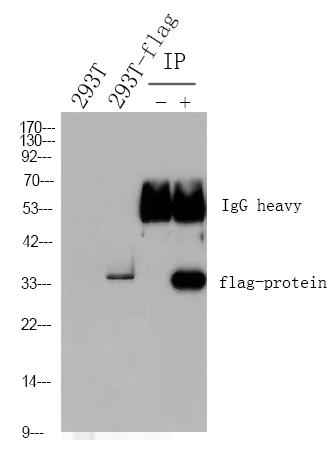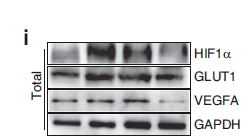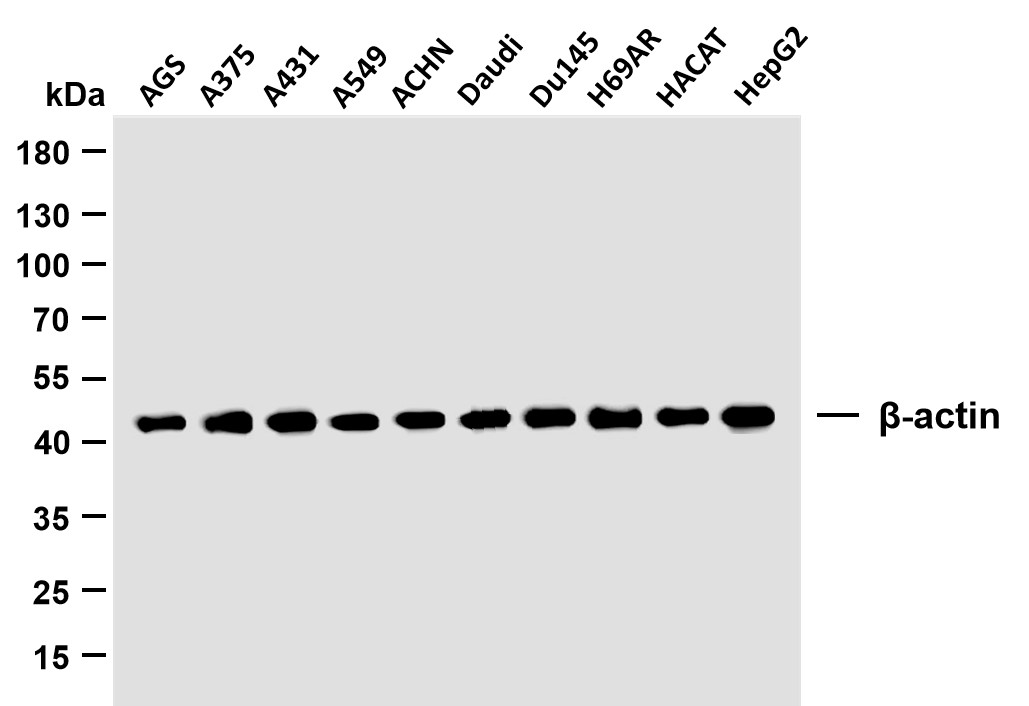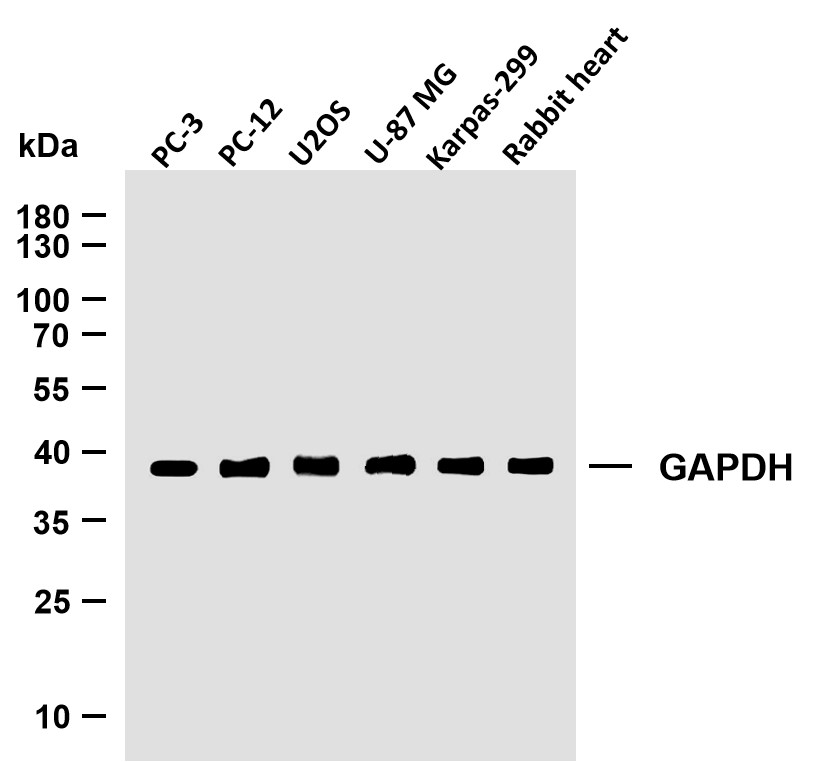
Catalog: YT1872
Size
Price
Status
Qty.
200μL
$450.00
In stock
0
100μL
$280.00
In stock
0
40μL
$150.00
In stock
0
Add to cart


Collected


Collect
Main Information
Target
GCK
Host Species
Rabbit
Reactivity
Human, Mouse, Rat
Applications
WB, ELISA
MW
55kD (Observed)
Conjugate/Modification
Unmodified
Detailed Information
Recommended Dilution Ratio
WB 1:500-1:2000; ELISA 1:10000; Not yet tested in other applications.
Formulation
Liquid in PBS containing 50% glycerol, 0.5% BSA and 0.02% sodium azide.
Specificity
GCK Polyclonal Antibody detects endogenous levels of GCK protein.
Purification
The antibody was affinity-purified from rabbit antiserum by affinity-chromatography using epitope-specific immunogen.
Storage
-15°C to -25°C/1 year(Do not lower than -25°C)
Concentration
1 mg/ml
MW(Observed)
55kD
Modification
Unmodified
Clonality
Polyclonal
Isotype
IgG
Related Products
Antigen&Target Information
Immunogen:
The antiserum was produced against synthesized peptide derived from human GCK. AA range:43-92
show all
Specificity:
GCK Polyclonal Antibody detects endogenous levels of GCK protein.
show all
Gene Name:
GCK
show all
Protein Name:
Glucokinase
show all
Other Name:
GCK ;
Glucokinase ;
Hexokinase type IV ;
HK IV ;
Hexokinase-4 ;
HK4 ;
Hexokinase-D
Glucokinase ;
Hexokinase type IV ;
HK IV ;
Hexokinase-4 ;
HK4 ;
Hexokinase-D
show all
Database Link:
Background:
Hexokinases phosphorylate glucose to produce glucose-6-phosphate, the first step in most glucose metabolism pathways. Alternative splicing of this gene results in three tissue-specific forms of glucokinase, one found in pancreatic islet beta cells and two found in liver. The protein localizes to the outer membrane of mitochondria. In contrast to other forms of hexokinase, this enzyme is not inhibited by its product glucose-6-phosphate but remains active while glucose is abundant. Mutations in this gene have been associated with non-insulin dependent diabetes mellitus (NIDDM), maturity onset diabetes of the young, type 2 (MODY2) and persistent hyperinsulinemic hypoglycemia of infancy (PHHI). [provided by RefSeq, Apr 2009],
show all
Function:
Catalytic activity:ATP + D-glucose = ADP + D-glucose 6-phosphate.,Disease:Defects in GCK are the cause of familial hyperinsulinemic hypoglycemia type 3 (HHF3) [MIM:602485]. HHF is the most common cause of persistent hypoglycemia in infancy. Unless early and aggressive intervention is undertaken, brain damage from recurrent episodes of hypoglycemia may occur.,Disease:Defects in GCK are the cause of maturity onset diabetes of the young type 2 (MODY2) [MIM:125851]; also shortened MODY-2. MODY [MIM:606391] is a form of diabetes mellitus characterized by autosomal dominant transmission and early age of onset. Mutations in GCK result in mild chronic hyperglycemia due to reduced pancreatic beta cell responsiveness to glucose, decreased net accumulation of hepatic glycogen and increased hepatic gluconeogenesis following meals.,enzyme regulation:The use of alternative promoters apparently enables the type IV hexokinase gene to be regulated by insulin in the liver and glucose in the beta cell. This may constitute an important feedback loop for maintaining glucose homeostasis.,Function:Catalyzes the initial step in utilization of glucose by the beta-cell and liver at physiological glucose concentration. Glucokinase has a high Km for glucose, and so it is effective only when glucose is abundant. The role of GCK is to provide G6P for the synthesis of glycogen. Pancreatic glucokinase plays an important role in modulating insulin secretion. Hepatic glucokinase helps to facilitate the uptake and conversion of glucose by acting as an insulin-sensitive determinant of hepatic glucose usage.,miscellaneous:In vertebrates there are four major glucose-phosphorylating isoenzymes, designated hexokinase I, II, III and IV (glucokinase).,online information:Glucokinase entry,similarity:Belongs to the hexokinase family.,tissue specificity:Pancreas (isoform 1) and liver (isoform 2 and isoform 3).,
show all
Cellular Localization:
Cytoplasm . Nucleus . Mitochondrion . Under low glucose concentrations, GCK associates with GCKR and the inactive complex is recruited to the hepatocyte nucleus. .
show all
Tissue Expression:
Lung,Pancreas,Placenta,
show all
Research Areas:
>>Glycolysis / Gluconeogenesis ;
>>Galactose metabolism ;
>>Starch and sucrose metabolism ;
>>Amino sugar and nucleotide sugar metabolism ;
>>Neomycin, kanamycin and gentamicin biosynthesis ;
>>Metabolic pathways ;
>>Carbon metabolism ;
>>Biosynthesis of nucleotide sugars ;
>>Insulin signaling pathway ;
>>Insulin secretion ;
>>Prolactin signaling pathway ;
>>Glucagon signaling pathway ;
>>Type II diabetes mellitus ;
>>Maturity onset diabetes of the young ;
>>Central carbon metabolism in cancer
>>Galactose metabolism ;
>>Starch and sucrose metabolism ;
>>Amino sugar and nucleotide sugar metabolism ;
>>Neomycin, kanamycin and gentamicin biosynthesis ;
>>Metabolic pathways ;
>>Carbon metabolism ;
>>Biosynthesis of nucleotide sugars ;
>>Insulin signaling pathway ;
>>Insulin secretion ;
>>Prolactin signaling pathway ;
>>Glucagon signaling pathway ;
>>Type II diabetes mellitus ;
>>Maturity onset diabetes of the young ;
>>Central carbon metabolism in cancer
show all
Signaling Pathway
Organismal Systems >> Endocrine system >> Insulin secretion
Organismal Systems >> Endocrine system >> Insulin signaling pathway
Organismal Systems >> Endocrine system >> Glucagon signaling pathway
Organismal Systems >> Endocrine system >> Prolactin signaling pathway
Human Diseases >> Cancer: overview >> Central carbon metabolism in cancer
Reference Citation({{totalcount}})
Catalog: YT1872
Size
Price
Status
Qty.
200μL
$450.00
In stock
0
100μL
$280.00
In stock
0
40μL
$150.00
In stock
0
Add to cart


Collected


Collect
Recently Viewed Products
Clear allPRODUCTS
CUSTOMIZED
ABOUT US
Toggle night Mode
{{pinfoXq.title || ''}}
Catalog: {{pinfoXq.catalog || ''}}
Filter:
All
{{item.name}}
{{pinfo.title}}
-{{pinfo.catalog}}
Main Information
Target
{{pinfo.target}}
Reactivity
{{pinfo.react}}
Applications
{{pinfo.applicat}}
Conjugate/Modification
{{pinfo.coupling}}/{{pinfo.modific}}
MW (kDa)
{{pinfo.mwcalc}}
Host Species
{{pinfo.hostspec}}
Isotype
{{pinfo.isotype}}
Product {{index}}/{{pcount}}
Prev
Next
{{pvTitle}}
Scroll wheel zooms the picture
{{pvDescr}}



















